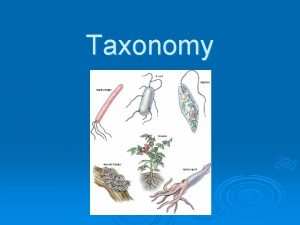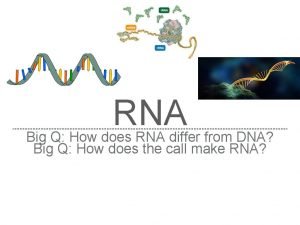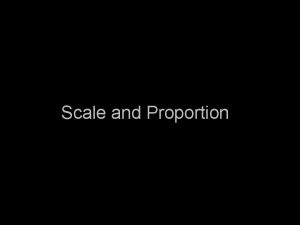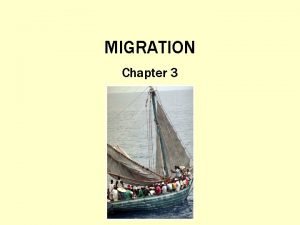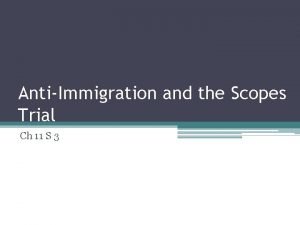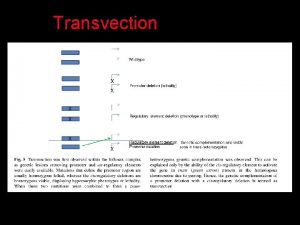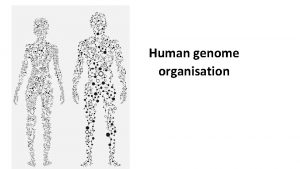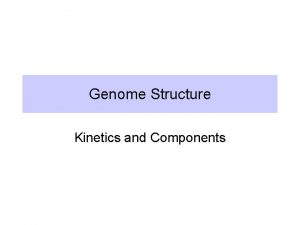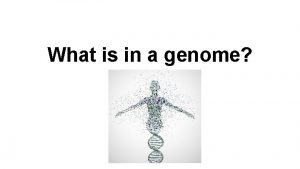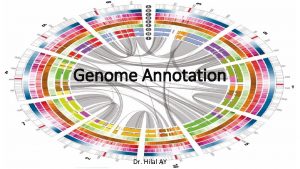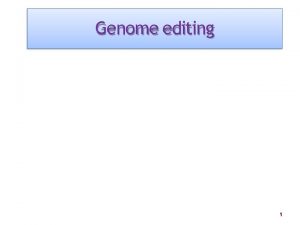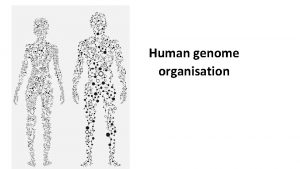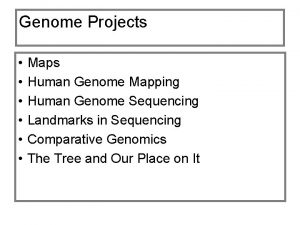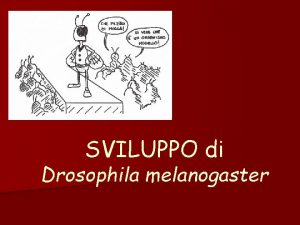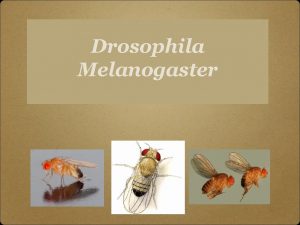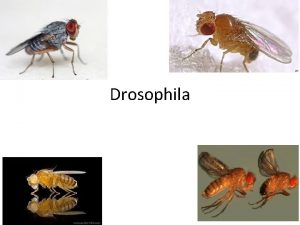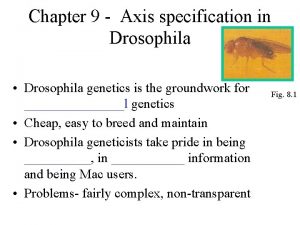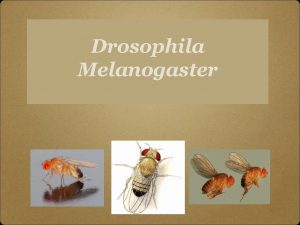Drosophila Genome How does it differ Differences Drosophila
















- Slides: 16

Drosophila Genome How does it differ?

Differences • Drosophila lacks canonical telomeres and the ortholog of vertebrate telomerase. • Instead it has a unique transposition mechanism. – Two non-LTR (long terminal repeat) retrotransposable elements, He. T-A and TART telomere-associated retrotransposons are attached to the chromosome ends.


Telomere function • Prevent the end of the chromosome from being treated as ds. DNA break. • In mammals, loss of telomeres results in cellcycle arrest and eventual apoptosis. • In Drosophila, terminal deletions can be recovered and maintained in Drosophila. These ends don’t contain He. T-A or TART sequences thus erode over time, but no cell cycle arrest. – End protection in Drosophila may be sequence independently mediated by heterochromatin protein HP 1.

ALT-alternative telomere maintenance • Suspected through homologous recombination-telomere-repeat elongation to lengths longer than telomerase creates; larger repeated sequences may be interpersed within telomeres. • Drosophila-an occational transposition event drives the extension of the telomeric sequences.

Evolution of Transposition • • Loss of sequence dependence of capping Loss of telomerase Use of an ALT Transposable element recruitment to maintain telomeric activity. • OR • Telomerase diverged from transposable elements.


Het-A and TART

How does the retrotransposition take place? • The colocalization suggests that these two telomeric transposons may have coevolved into symbiotes, with TART supplying the reverse transcriptase and He. T-A the nuclear targeting.

How does the retrotransposition take place? • For most non-LTR elements, the reverse transcription is primed by a 3' hydroxyl exposed at a nick in chromosomal DNA. Reverse transcription of He. T-A and TART is hypothesized to be primed by the 3' hydroxyl on the extreme end of the chromosome.

Drosophila, worm, mammals • Size of organism is not correlated with size of genome. • Smaller worm has 35% more genes 62% more paralogs than flies. • Half of fly genes have orthologs in mammals, only 1/3 of worm genes has.

Odor receptor genes • Flies have 57 • Fish has 100 • Mice and worms have 1000.

Transcription factors • Flies have about 700 (4. 5%) • 500 in worm (3. 5%)

Polytene Chromosomes • Polytene chromosomes are giant chromosomes common to many dipteran (two-winged) flies. They begin as normal chromosomes, but through repeated rounds of DNA replication without any cell division (called endoreplication), they become large, banded chromosomes


Polytene Chromosomes • Size of each band is an average length of 26. 2 kb. • X chromosome puff- a series of 3. 5 (each 350 bp) inverted repeats flaking 154 kb region-these repeats alters the chromosomes macrostructure.
 Semi-global alignment
Semi-global alignment How does the fanlike diagram differ from a cladogram
How does the fanlike diagram differ from a cladogram Big q
Big q How does art criticism differ from art appreciation?
How does art criticism differ from art appreciation? What is draping in cosmetology
What is draping in cosmetology Differentiate between scale and proportion
Differentiate between scale and proportion When does a physical change occur study jams
When does a physical change occur study jams How does a physical change differ from a chemical change?
How does a physical change differ from a chemical change? Traditional grammar
Traditional grammar Romanticism gothic literature
Romanticism gothic literature How does a feature story differ from a straight news story
How does a feature story differ from a straight news story How does interpretation b differ from interpretation a
How does interpretation b differ from interpretation a What is a cyclic movement
What is a cyclic movement How does cyclic movement differ from migration?
How does cyclic movement differ from migration? How does bryan's view of science differ from that of malone
How does bryan's view of science differ from that of malone Bat characteristics
Bat characteristics Hox gene mutation in drosophila
Hox gene mutation in drosophila

